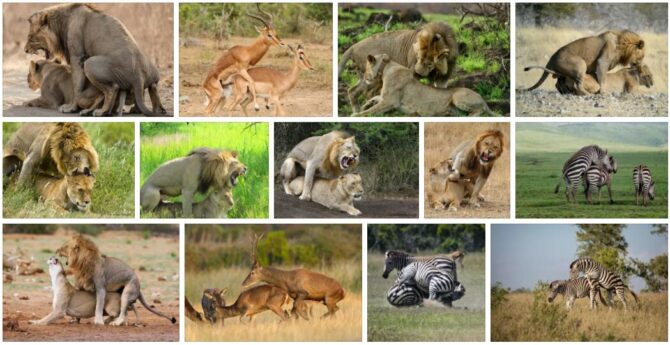It is called pairing to the act and result of pairing a verb that can refer to different issues: bringing together males and females to have breeding assemble two elements to form a pair or have different objects so that they are equal.
If we focus on the field of biology, the notion of mating encompasses the behaviors and actions that two individuals of different sex carry out for the development of procreation. Mating, in this context, ends in copulation.
It is important to note that before reaching this last step, which consists of the action that the male performs to inseminate the female, which is usually described by the term penetration, mating is a broader set, in which we also find the different forms of courtship.
Courtship is a process that begins with the selection of an individual with the aim of maintaining intimate relationships with him, and the subsequent behavior to attract him. Although this term is currently used especially to speak of animal species, it is also used by humans.
Animal species, to reproduce, develop mating naturally. However, in some cases, man intervenes in reproduction and neglects that mating. This occurs when artificial insemination of livestock is used, for example. In these cases, the animals do not mate to have young.
The structuring of sexual behaviors is known as a mating system. Links can be within the framework of monogamy or polygamy, depending on the species. In the case of the human being, the mating system is very wide since there are multiple types of relationships. Humans also often develop sexual relations without reproductive purposes.
The idea of mating also appears in other areas that are not linked to sexuality. The base pairing is the interaction established nucleobases and permits hybridization of ribonucleic acid (RNA) and deoxyribonucleic acid (DNA).
To achieve the emergence of such folded or hybridized forms of nucleic acids, it is necessary that certain well-defined regions interact. The well-known scientists Francis Harry Compton Crick and James Dewey Watson, originally from England and the United States respectively, modeled a mating pattern in which the guanine-cytosine, adenine-thymine interaction can be seen, resulting in the double helix structure deoxyribonucleic acid.
Another thing that arises from the complementary nature of such mating is the mechanism of transcription and replication, two fundamental processes for the processing and transfer of genetic information. This phenomenon can be both intramolecular and intermolecular; for example, single-stranded RNAs are paired intramolecularly, between single-stranded parts that complement each other, while the bases of one strand of DNA do so the other way, intramolecularly, with those of the strand that complements them.
The interactions that can be seen during base pairing are governed by hydrogen bonding. Stability can only be obtained if the pairs have an adequate degree of geometric correspondence. Over the decades since base mating was first observed, scientists have discovered several types; in addition to the aforementioned of Watson and Crick, the Wobble, the Hoogsteen and the one given with sugar oriented in trans or cis stand out.
In graph theory, mating is the group of edges that lack shared vertices in a graph.
